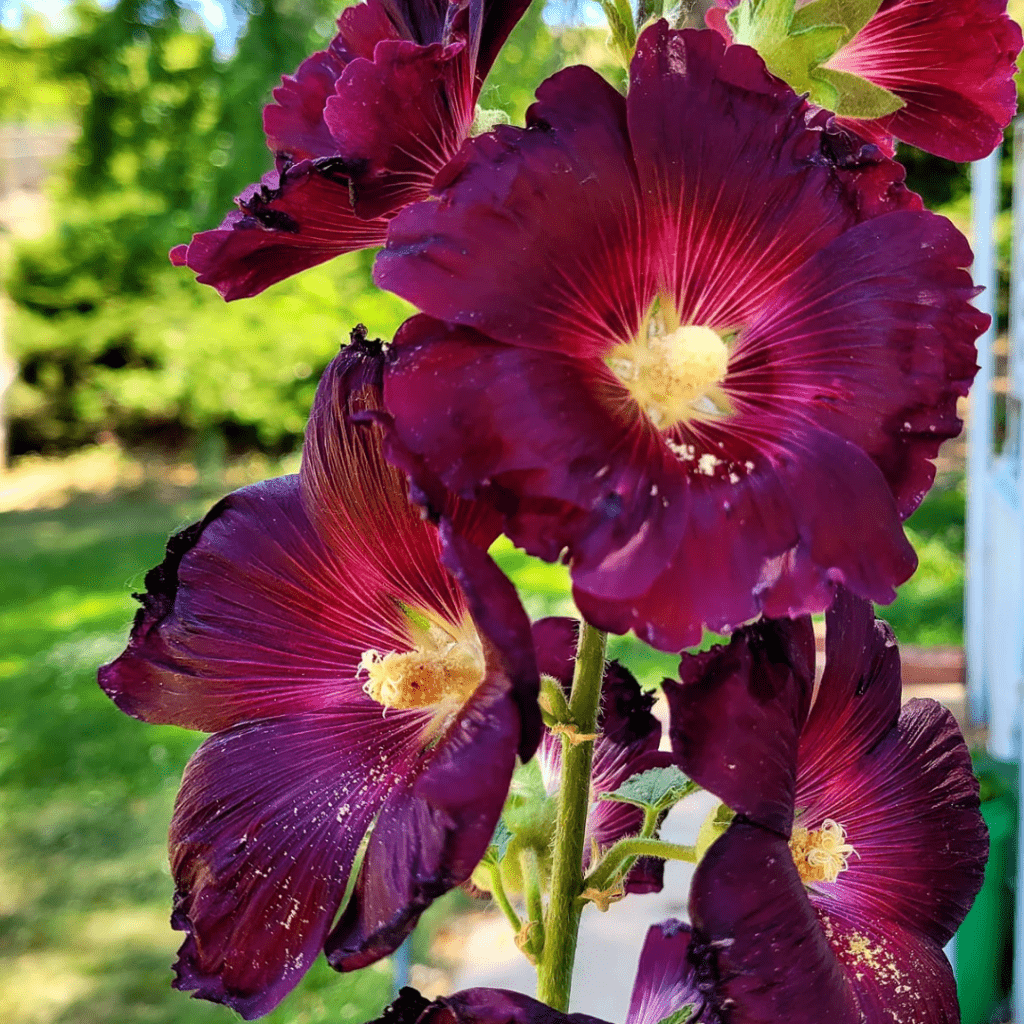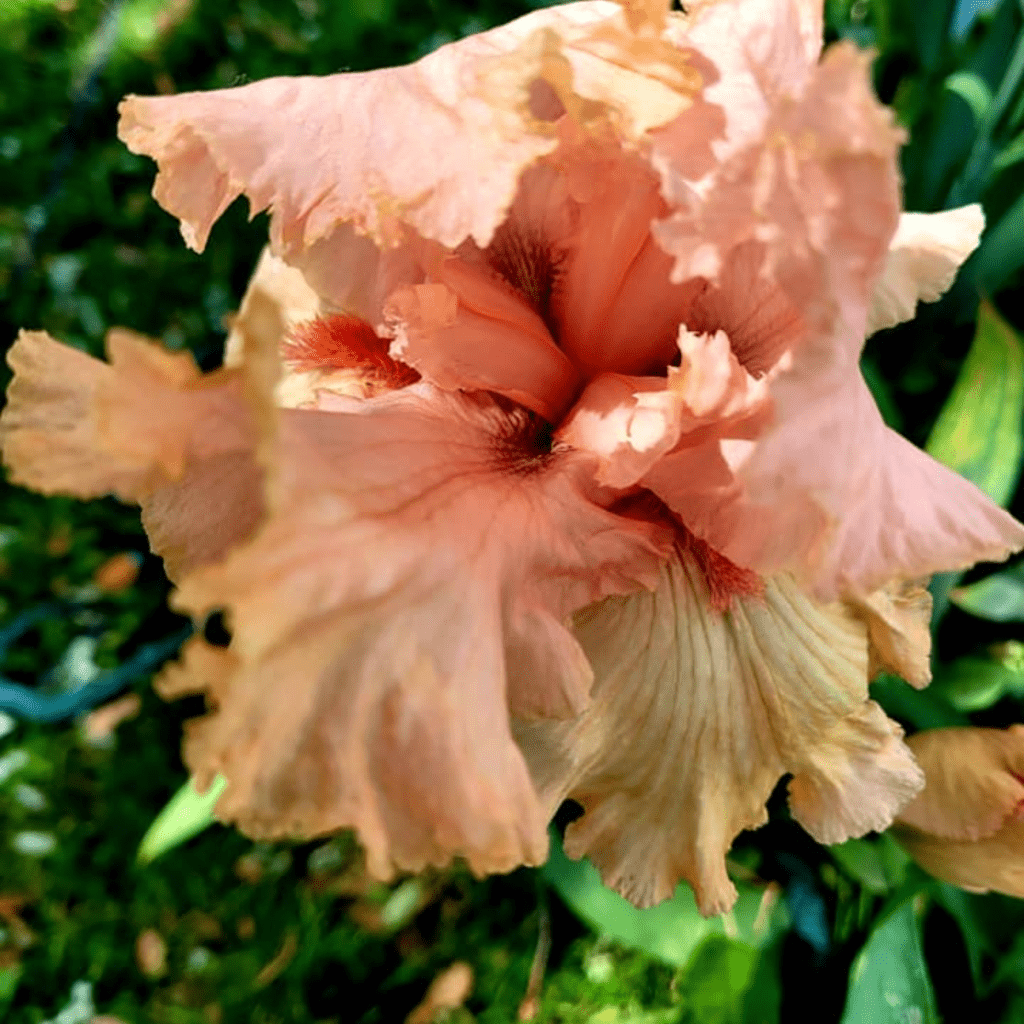Grow and care for roses.
Roses are timeless garden favorites known for their beauty, fragrance, and versatility. Whether you’re a beginner or a seasoned gardener, learning how to grow and care for roses properly can reward you with healthy blooms season after season. In this guide, you’ll discover essential rose care tips, including planting, pruning, watering, and protecting your roses from pests and diseases, so you can enjoy vibrant, thriving roses in your garden!
Rose bushes bring delight to the garden from their gorgeous spring blooms to the bountiful hips that follow in the fall season. You can be sure to be given a huge harvest from your rose bush, so be prepared to learn how to preserve the rose petals if that’s your fancy!
I’ve been growing roses for years, and they’ve become one of the highlights of my cottage garden. My rose bushes bloom in a mix of beautiful colors—soft pinks, deep reds, creamy whites, lavender, and even a yellow as bright as the sun. With proper care, most rose bushes will thrive for 6 to 10 years, but with a little extra attention and love, some can live as long as 50 years.
In this post, I will explore how to grow, care for, and harvest a rose bush and how to preserve rose petals, as well as how to propagate new rose bushes from cuttings!
Come take a walk with me through my rose garden!
This is a pinnable post. Tap or hover over any image in this post to pin to your Pinterest Boards.
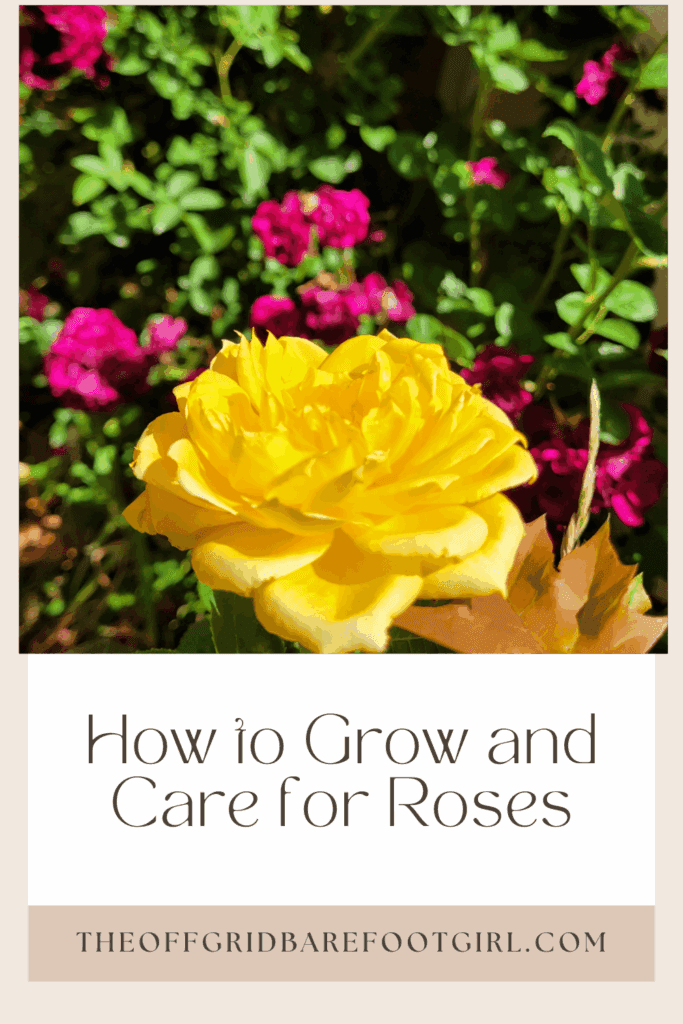
Why I Grow Roses in My Cottage Garden
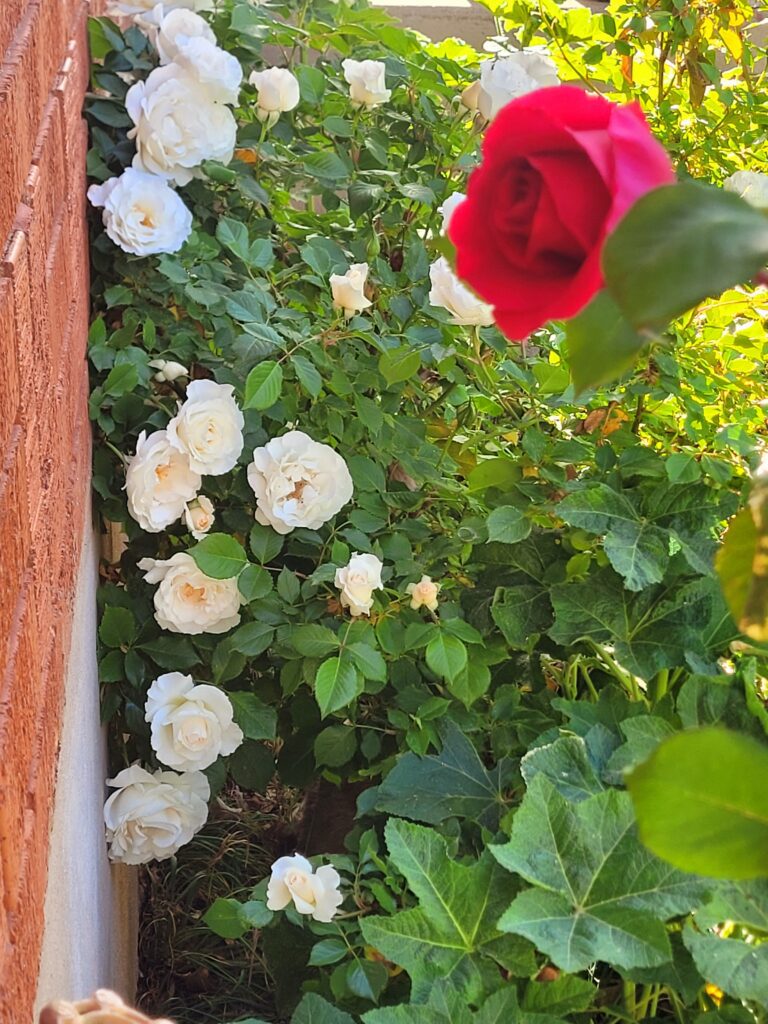
Why Are Roses So Special in a Homestead Garden?
Roses are more than just pretty flowers—they bring life, fragrance, and a sense of timeless beauty to any home garden.
When my roses are in full bloom, the entire garden feels like a fairytale. The scent is calming and nostalgic, almost like stepping into an old storybook. I love watching bees flit between the petals, and sometimes I sit with my morning tea just to breathe in their perfume!
They’re also incredibly useful. I harvest petals for rosewater, dry them for potpourri, and use them in homemade salves. They’re a beautiful blend of beauty and function, just like everything in a well-run homestead should be.
Choosing the Right Roses for Your Space
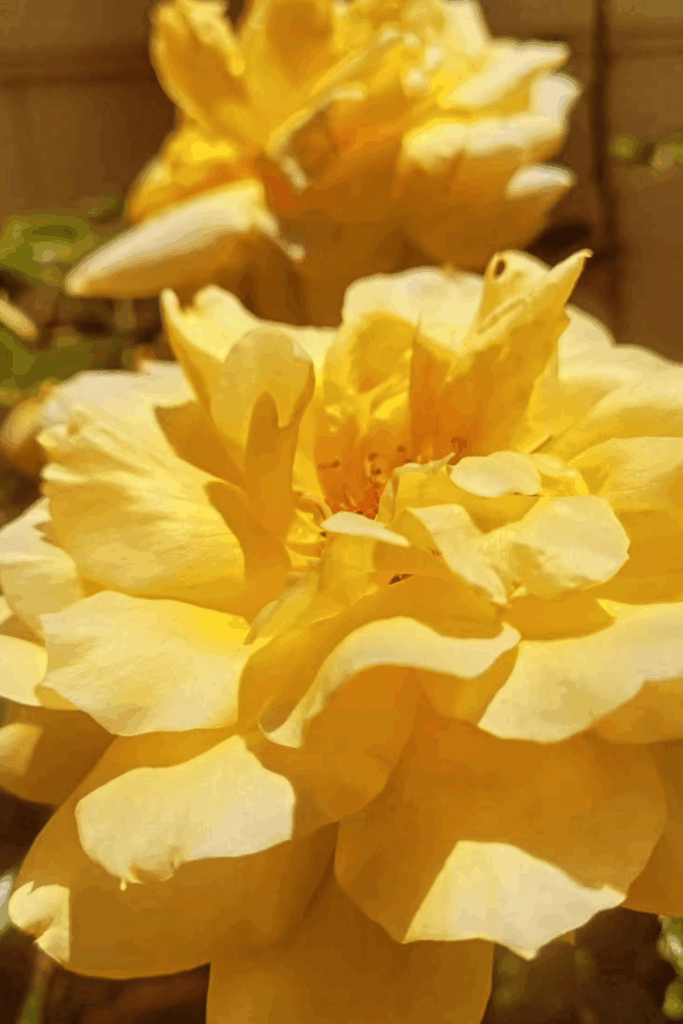
Types of Roses to Consider
What’s the Difference Between Shrub Roses, Climbers, Hybrid Teas, and Heirloom Varieties?
When I first started growing roses, I had no idea there were so many types. Over time, I’ve learned how each one adds its own charm and purpose to the garden.
Shrub roses are my go-to for easy beauty. They’re bushy, bloom generously, and require very little fuss. I plant them along pathways or as natural borders, and they’re always reliable.
Climbing roses are perfect for arches, fences, or even an old trellis. They add a vertical wow factor and make my garden feel like a secret hideaway. You do need to guide and prune them, but the blooms are worth it.
Hybrid tea roses are what most people picture when they think of classic roses. Long stems, perfect petals, and an elegant look. These can be a bit high-maintenance, but I keep a few just because they’re stunning in a vase.
Heirloom roses, also called old garden roses, are my absolute favorite. They’re rich in scent, full of character, and often more disease-resistant than modern hybrids. Many have been passed down through generations, and they feel like living history in my garden.
What Are the Easiest Roses to Grow for Beginners or Low-Maintenance Gardens?
If you’re new to growing roses—or just want something that thrives without constant babying—don’t worry. There are plenty of easy-care options that still give you gorgeous blooms.
Start with shrub roses or landscape roses. These varieties are tough, disease-resistant, and bloom for months with very little pruning or spraying. I love them because they give maximum beauty with minimal effort.
Look for “own-root” roses instead of grafted ones. They tend to be hardier and bounce back more quickly if damaged.
Heirloom or antique varieties are also great for beginners. Many of them were bred before the days of synthetic fertilizers or pesticides, so they’re naturally well-suited to organic gardening.
Whether you’re planting in the ground or in large containers, choose a sunny spot, give them room to breathe, and start small. Roses are forgiving once you understand their rhythm—and I promise, they’re worth it!
Recommended Rose Varieties by Type
| Type of Rose | Recommended Varieties | Description |
|---|---|---|
| Shrub Roses | Knock Out, Home Run, Double Knock Out | These roses are low-maintenance, disease-resistant, and bloom repeatedly. Perfect for beginners or those who want roses without the fuss. |
| Climbing Roses | New Dawn, Zephirine Drouhin, Climbing Iceberg | Ideal for fences, trellises, or arches. These roses thrive in full sun and add vertical beauty to any space. They require regular pruning but are fairly easy to care for. |
| Hybrid Tea Roses | Peace, Mister Lincoln, Double Delight | Known for long stems and classic rose blooms, hybrid teas are perfect for cutting gardens. They do require more attention, such as regular deadheading and pest control. |
| Heirloom Roses | Madame Hardy, Rosa Mundi, Alba Semi-Plena | These old-fashioned varieties are hardy, fragrant, and often disease-resistant. They are the perfect choice for those looking for a historical or fragrant addition. |
Colors, Fragrance, and Function
How Do I Choose Roses Based on Scent, Color Palette, or Garden Purpose?
When selecting roses for my garden, I always consider what purpose they’ll serve and how they’ll fit with my vision.
Scent is one of my top priorities. A rose’s fragrance can fill an entire garden, and some, like the Damask and Old Garden Roses, have the most intoxicating perfumes. I love sitting near them with a cup of tea and just breathing in their rich, complex scent.
Color palette is another important factor. I often choose roses based on how they complement the rest of my garden. For a calming, monochrome look, I lean towards soft pastels like pale pink and lavender. But for a dramatic contrast, I adore deep reds or yellows, like Mister Lincoln and Graham Thomas. Mixing these roses with other flowers can add layers of beauty to my cottage garden.
Finally, garden purpose—whether I want roses for cutting, creating a hedge, or filling a trellis—helps me decide what varieties to grow. For example, if you’re planting a rose hedge, Knock Out or Home Run are perfect, as they’re hardy, fast-growing, and require little maintenance.
Which Roses Attract Pollinators to My Garden?
One of the most beautiful things about growing roses is that they attract a variety of beneficial pollinators—bees, butterflies, and even hummingbirds. If you’re looking to support pollinators, here are some varieties that I’ve found work wonders in my garden.
Single-petaled roses are the best for attracting bees. They have a more open structure, which makes it easier for bees to access their pollen. I love varieties like Rosa Rugosa and Cecile Brunner, which are packed with nectar and often visited by honeybees and bumblebees.
Fragrant roses, like New Dawn and Gertrude Jekyll, not only smell wonderful to us but also to pollinators. The scent draws in bees and butterflies, turning your garden into a thriving, buzzing haven.
Heirloom roses, too, tend to be more pollinator-friendly. Varieties such as Madame Hardy and Rosa Mundi have stood the test of time for a reason—they provide rich nectar and pollen for insects and are often more resistant to pests, so I don’t have to use harmful chemicals in my garden.
By choosing these varieties, you’re not only adding beauty but also helping the environment thrive—one petal at a time.
Planting Roses the Right Way
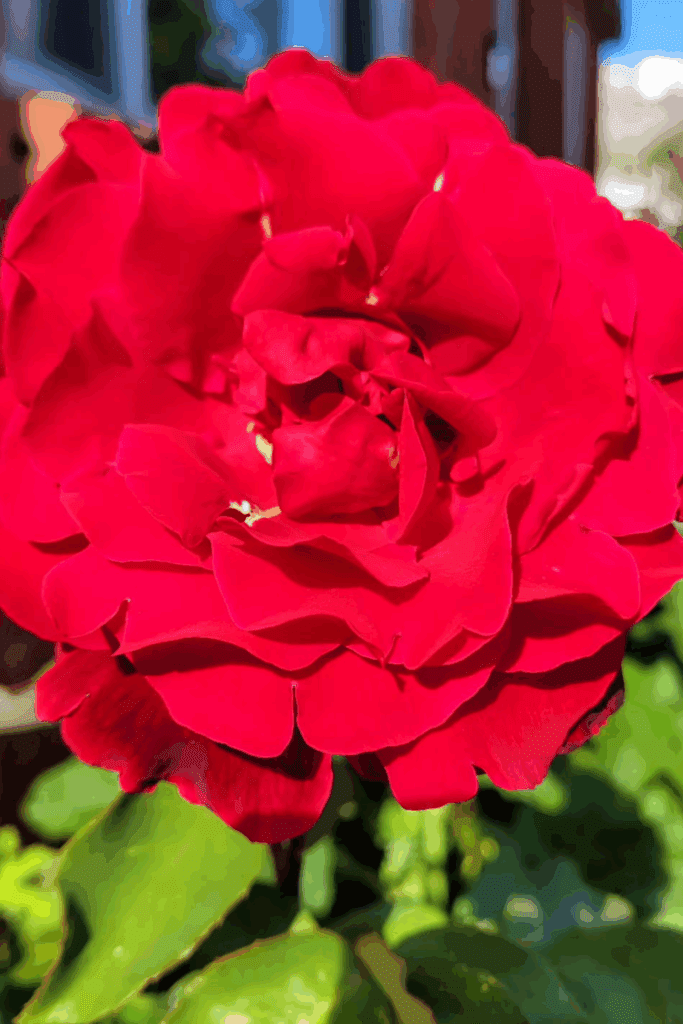
When and Where to Plant
When Is the Best Time of Year to Plant Roses?
One of the questions I’m often asked is when to plant roses for the best results—and timing really does make a difference.
In my experience, early spring or fall are the ideal seasons for planting roses. I like to plant in spring just after the last frost, when the soil is soft and the weather is starting to warm up. This gives the rose bush a full growing season to establish strong roots.
Fall planting also works well, especially in mild climates. I aim for at least 6 weeks before the first hard freeze. The cool weather reduces stress on the plant, and as long as the ground isn’t frozen, the roots will quietly get to work before winter sets in.
Avoid summer planting if you can. It’s doable, but the intense heat means more watering and a higher chance of transplant shock.
So, whether you’re working with bare-root roses or potted ones, give them a head start in spring or fall, and they’ll reward you with healthy growth and beautiful blooms.
How Much Sunlight and What Kind of Soil Do Roses Need?
If there’s one thing I’ve learned from growing healthy, happy roses, it’s this: they’re sun lovers and a little picky about their soil—but once you get it right, they thrive.
Roses need at least 6 to 8 hours of direct sunlight each day. I always choose the sunniest spot in my garden, preferably with morning sun, which helps dry off the dew and prevent disease. Shady areas tend to lead to leggy growth and fewer blooms.
When it comes to soil, roses love it rich and well-drained. I prep my planting holes with a mix of compost, aged manure, and native soil to create a loose, fertile base. Good drainage is key—roses hate soggy roots.
If your soil is heavy clay or very sandy, don’t worry. You can amend it with organic matter. And always check the pH level—roses do best in slightly acidic soil around 6.0 to 6.5.
Getting the sun and soil right is one of the most important steps, and once you do, your roses will reward you for years to come.
Step-by-Step Rose Planting
How Do I Prepare My Soil for Planting Roses?
Before I plant any rose, I always start with the soil—it truly makes all the difference in how well your roses grow.
First, I loosen the soil about 12 to 18 inches deep to give the roots room to spread. Roses don’t like compacted dirt. Then I mix in plenty of compost, aged manure, or leaf mold to enrich it with nutrients and improve drainage.
If your soil is heavy clay (like mine was), mix in sand or perlite to loosen it. For sandy soils, adding organic matter helps retain moisture. I also check the pH level, aiming for a slightly acidic range between 6.0 and 6.5. You can find inexpensive pH testers online or at garden centers.
Healthy soil is the foundation of happy roses. Taking time to prepare it well means you’ll see stronger plants, more blooms, and fewer issues down the road.
How Far Apart and How Deep Should I Plant Roses?
Getting the spacing and depth right when planting roses has saved me a lot of heartache and prevented diseases and overcrowding.
I space my rose bushes about 2 to 3 feet apart, depending on the variety. This gives them room to grow, breathe, and stay dry around the foliage, which helps prevent fungal diseases.
As for depth, I dig a hole that’s wide and deep enough to comfortably fit the root ball. For grafted roses (the kind with a noticeable bump at the base), I make sure the graft union is just below the soil surface—about 1 to 2 inches deep. This protects it from winter damage and keeps it stable.
Proper spacing and planting depth set your roses up for long-term success and help create a beautiful, balanced garden layout.
What Are the Best Tips for Transplanting or Planting Bare Root Roses?
Transplanting roses or planting bare root varieties can feel a bit intimidating, but I’ve done it many times—and it’s very doable with the right steps.
For transplanting an established rose, I always dig a wide circle around the root ball and move as much soil with it as possible. I replant it at the same depth it was growing before, water deeply, and prune it back a bit to reduce stress while it settles into its new spot.
With bare-root roses, I soak the roots in a bucket of water for 4 to 24 hours before planting. This rehydrates the plant and wakes it up after dormancy. Then I built a small mound of soil in the planting hole and gently spread the roots over it.
After planting, I water deeply, mulch around the base (but not touching the stem), and keep the soil consistently moist for the first few weeks. With a little care and patience, bare-root roses burst into life beautifully by early summer.
Caring for Roses Season After Season
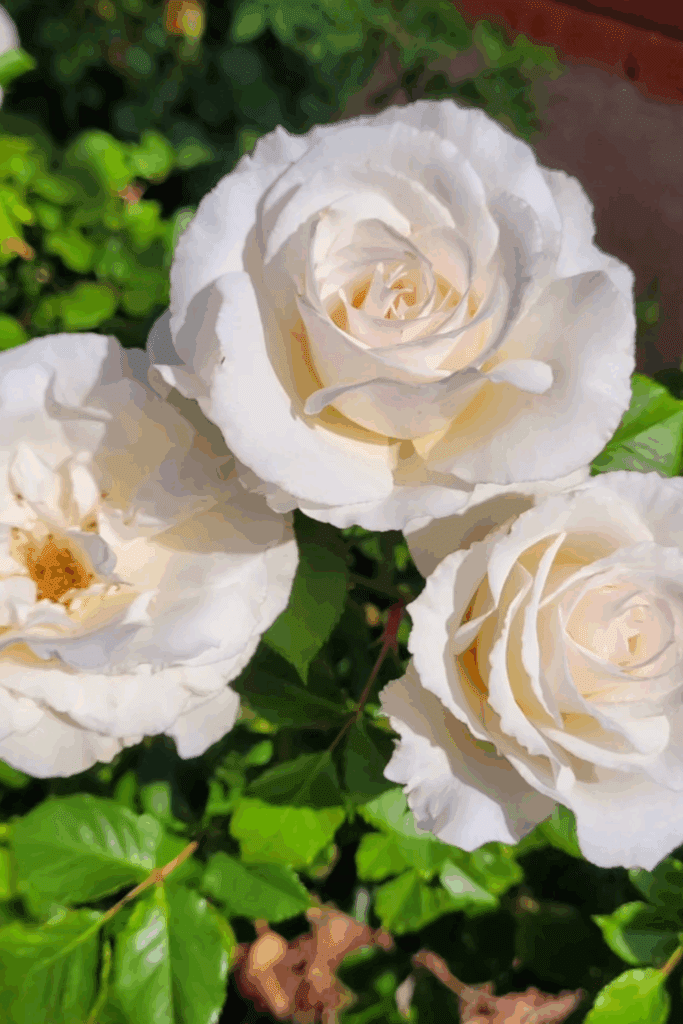
Watering, Feeding, and Mulching
How Do I Water My Roses Without Wasting Water?
One of my favorite homestead hacks is using a low-waste watering system that keeps my roses happy without draining resources.
I use soaker hoses and DIY drip lines that deliver water right to the base of each rose bush. This method helps me avoid evaporation and ensures every drop goes exactly where it’s needed—no more splashing water on the leaves, which can encourage disease.
On especially dry days, I water early in the morning or in the evening to minimize loss from the sun. I also collect rainwater in barrels, and it feels good knowing I’m reducing water waste while keeping my garden thriving.
What Natural Fertilizers Can I Use to Feed My Roses?
Over the years, I’ve moved away from store-bought fertilizers and now rely on natural, low-cost options that my roses absolutely love.
I feed my bushes with homemade compost, which adds rich nutrients and improves the soil’s structure. I also toss crushed banana peels around the base of each plant—roses adore the potassium! Sometimes I mix in used coffee grounds for a little nitrogen boost (just don’t overdo it).
Every season, I add a scoop of aged manure or worm castings to help strengthen growth and support healthy blooms. Natural fertilizers not only save money, they’re better for the soil, the bees, and the planet.
How Does Mulching Help Keep Roses Cool and Hydrated?
If there’s one garden habit I never skip, it’s mulching my roses—especially during the hot, dry months.
I lay down a 2- to 3-inch layer of mulch around each bush, leaving a little space near the stem. I love using shredded bark, wood chips, or straw, depending on what I have on hand. Sometimes I even mix in dried leaves from the fall.
Mulch works like a protective blanket. It keeps the soil cool, prevents moisture loss, and suppresses weeds that compete for nutrients. Plus, as it breaks down, it adds organic matter to the soil.
Mulching makes your roses more resilient and cuts down on how often you need to water. It’s one of the easiest ways to support your plants naturally.
Pruning and Deadheading for More Blooms
When and How Do I Prune My Roses?
Pruning used to intimidate me, but once I learned the basics, it became one of the most rewarding parts of rose care.
I typically prune my roses in early spring, just as the buds begin to swell, but before they leaf out fully. This helps the plant direct its energy into strong new growth and bigger blooms. I start by removing any dead, damaged, or diseased wood—those branches are easy to spot once the plant wakes up after winter.
Then, I shape the bush by cutting above outward-facing buds, which encourages an open, vase-like form. This improves air circulation and reduces the chance of mildew. Don’t be afraid to cut boldly—roses are tough and bounce back beautifully!
What Tools Do I Need to Prune and Care for Roses?
Having the right tools makes all the difference in keeping your roses healthy and easy to manage.
My go-to tool is a sharp pair of bypass pruners—they make clean cuts and reduce damage to the stems. For thicker canes, I use lopper shears or a small folding pruning saw. A good pair of rose gloves is essential too—trust me, even the nicest roses have a thorny side!
I also keep rubbing alcohol nearby to sterilize my tools between cuts or plants. It may seem like a small step, but it helps prevent the spread of disease.
Keeping your tools clean and sharp makes rose care smoother and keeps your bushes thriving year after year.
How Do I Encourage Roses to Bloom More Often?
One of the simplest ways I get my roses to bloom again and again is by deadheading spent flowers throughout the growing season.
As soon as a bloom starts to fade, I snip it off just above a set of five-leaflet leaves—this is where the next strong shoot is most likely to grow. Removing old flowers signals the plant to produce new buds rather than focusing on seed production (which ends the blooming cycle).
I make this part of my weekly garden walk. It only takes a few minutes, and the payoff is continuous blooms, especially with repeat-blooming varieties like shrub roses and hybrid teas.
Deadheading isn’t just about looks—it’s a gentle nudge that tells your roses to keep putting on a show. Don’t worry, I save and dry all of my rose petals!
Natural Pest and Disease Control
What Are the Most Common Rose Pests and Fungal Problems?
Over the years, I’ve dealt with my fair share of pests and diseases, but learning to identify and manage them has made rose growing so much easier.
The most common troublemakers in my garden are aphids, thrips, and Japanese beetles. Aphids cluster on tender new growth and suck the sap, while thrips damage the petals before they even open. Japanese beetles chew through leaves and can quickly strip a bush. For fungal issues, black spot, powdery mildew, and rust are the main culprits. These thrive in humid or rainy conditions and often appear on lower leaves first.
I treat pests with insecticidal soap, hand-picking, or even a blast of water from the hose. For fungus, I use homemade sprays with baking soda or neem oil, and I remove any infected leaves to stop the spread. Keeping good airflow and avoiding overhead watering helps prevent many of these issues before they start.
How Do I Spot Rose Problems Early Before They Spread?
Catching rose issues early is key to keeping your bushes healthy all season long. I’ve learned to pay close attention—my garden walk is part inspection and part meditation.
I check for wilting buds, spotted or yellowing leaves, and any sticky residue (which can mean aphids are nearby). Fungal diseases often start as small, round black spots or a powdery white coating—if I see that, I act fast by pruning and treating naturally.
Pests usually hang out on the undersides of leaves or inside newly forming blooms. I flip a few leaves as I walk by and take note of anything unusual. It’s a simple habit that helps me stop problems before they get out of control.
Early detection makes rose care far less stressful—and your blooms will thank you for the extra attention!
My Favorite Organic Solutions
What DIY Sprays and Garden Teas Can I Use on My Roses?
I love making my own natural sprays and teas to keep my roses healthy without harsh chemicals. It’s budget-friendly, safe for pollinators, and easy to whip up right in my outdoor kitchen.
One of my go-to sprays is a simple baking soda and water mix—about one teaspoon per quart of water with a dash of liquid soap. It helps prevent powdery mildew and black spot. For pests like aphids, I make a garlic-pepper tea, steeped overnight and strained, then sprayed directly on the leaves.
Another favorite is compost tea—I let compost soak in a bucket of water for a day or two, stir it well, and pour it at the base of my rose bushes. This gives them a nutrient boost and builds up soil health over time. These homemade solutions have become part of my weekly rhythm in the garden—and my roses love it!
How Do I Use Companion Planting and Beneficial Insects with My Roses?
Companion planting is one of my secret weapons for keeping my roses strong, colorful, and mostly pest-free. I love tucking in herbs and flowers that serve a purpose—and look beautiful doing it!
I always plant lavender, catmint, or thyme near my roses. Not only do they repel unwanted pests like aphids and Japanese beetles, but they also attract beneficial insects like ladybugs and lacewings. Marigolds are another favorite—they help deter nematodes and other soil-borne issues.
I also let a few yarrow or dill plants flower in nearby beds. Their blooms are magnets for predatory wasps and hoverflies, which naturally control pest populations. Companion planting lets me grow healthier roses with fewer interventions—and adds so much charm to my off-grid cottage garden.
Harvesting and Preserving Rose Petals
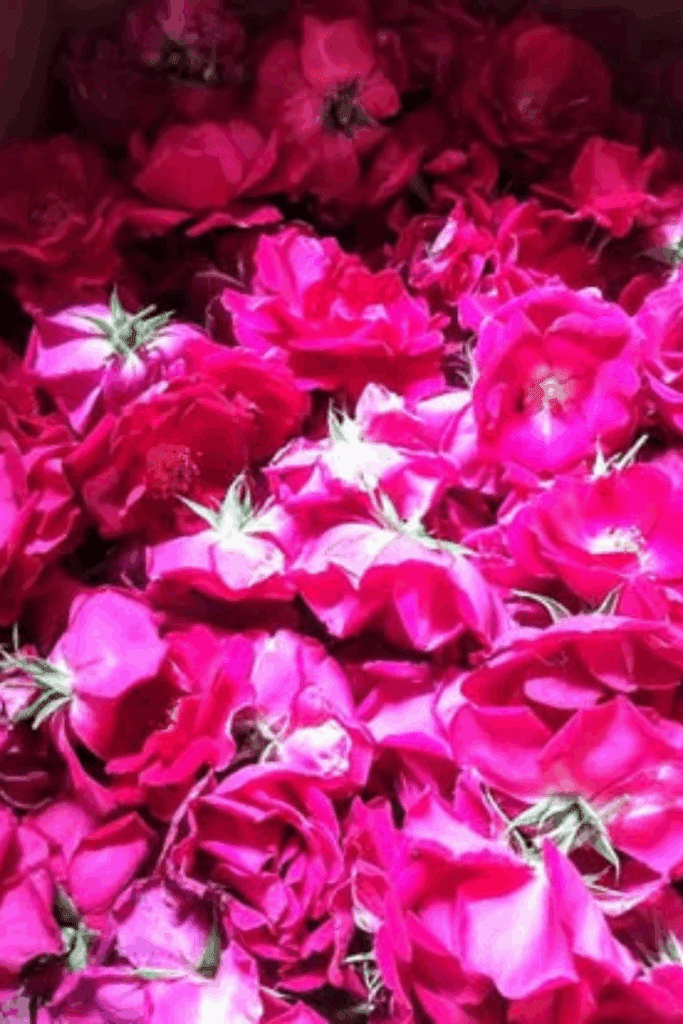
How and When to Harvest Petals
When Is the Best Time of Day and Stage of Bloom to Harvest Rose Petals?
Over the years, I’ve learned that timing really matters when harvesting rose petals, especially if you want the best color, scent, and usefulness.
I always pick my rose petals in the early morning, just after the dew has dried but before the sun gets too hot. That’s when the petals are freshest and most fragrant. Midday heat can cause the oils to fade, and evening harvests often trap too much moisture.
I look for blooms that are just starting to open—not tight buds, and not petals already wilting or dropping. Those early-opening roses are full of vibrant color and rich fragrance, perfect for preserving or using in homemade skincare, teas, or crafts.
How Do I Dry, Press, or Infuse Rose Petals for Later Use?
Preserving rose petals is one of my favorite ways to stretch the beauty of the season into winter months—and it’s easier than you might think.
For drying, I spread petals in a single layer on a screen or tray in a cool, shaded place with good airflow. In just a few days, they’re ready for use in sachets, teas, or homemade bath salts. Pressing petals between parchment paper and heavy books also works beautifully for crafts or journaling.
When I want to infuse petals, I use dried or fresh petals in oils like almond or jojoba, letting them steep in a sunny window for a couple of weeks. The result is a gently scented oil perfect for skin care. You can also make rose-infused honey, vinegar, or even rosewater—each one brings a little cottage garden magic into your daily life.
Fun Uses for Rose Petals
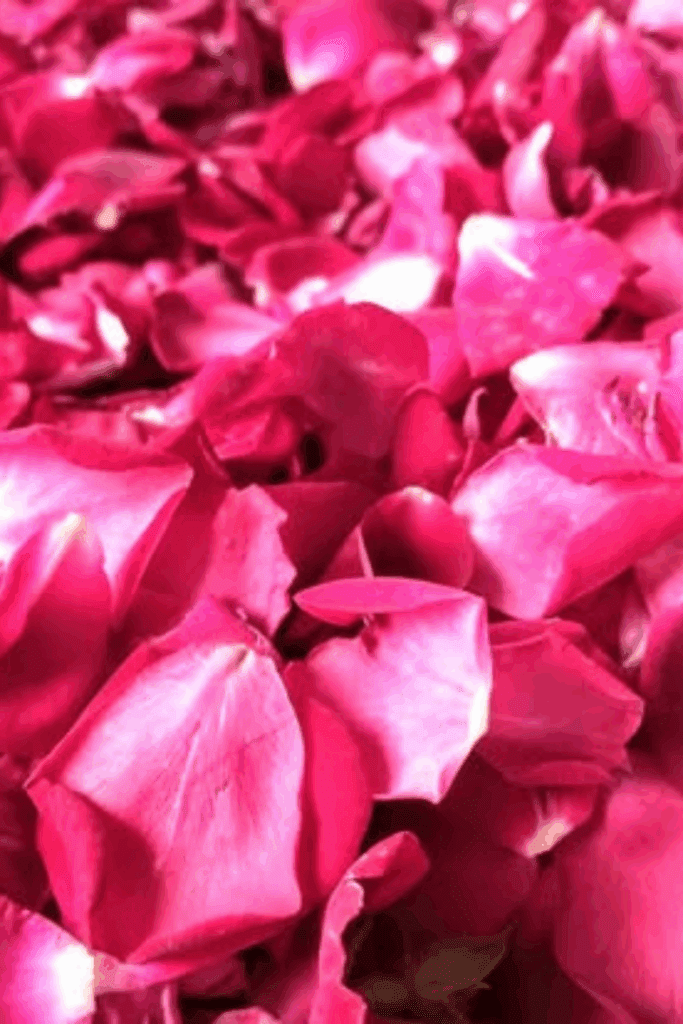
How Do I Make Rosewater and Herbal Teas from My Garden Roses?
Making rosewater and tea from my own garden roses feels like bottling up a bit of summer. It’s simple, soothing, and fills my home with the most heavenly scent.
To make rosewater, I simmer fresh, pesticide-free petals in a pot of distilled water for about 20 minutes, then strain them into a glass jar. I use it as a facial toner, linen spray, or even in baking.
For herbal teas, I dry the petals first, then store them in a sealed jar. When I’m ready, I steep a tablespoon of petals in hot water with a little honey or lemon balm. It’s naturally calming and feels like a warm hug in a mug.
How Can I Use Rose Petals in Salves, Bath Soaks, or Potpourri?
Roses aren’t just pretty—they’re incredibly useful in homemade body care and home remedies. I use my petals in all kinds of cozy, self-care projects.
For salves, I infuse dried rose petals into olive oil, then mix that with beeswax to make a soothing balm for dry skin. The rose scent is gentle and calming.
In bath soaks, I combine dried petals with Epsom salts, dried lavender, and a few drops of essential oil. It turns an ordinary bath into a relaxing spa experience.
Potpourri is one of my favorite ways to preserve its scent. I blend dried petals with orange peels, cloves, and cinnamon sticks—perfect for tucking into drawers or gifting to friends.
What Are Some Decorative and Edible Ways to Use Rose Petals?
I love finding creative ways to use rose petals beyond the garden—they’re beautiful, fragrant, and surprisingly versatile in both the kitchen and around the home.
For decorations, I scatter petals across tables for tea parties or tuck them into handmade candles and soaps. They add a nostalgic, romantic feel to any space.
When it comes to edibles, I use pesticide-free petals to decorate cakes, cupcakes, or even toss a few into salads for a floral twist. You can also sugar-coat them for a sparkly, vintage touch that’s almost too pretty to eat.
Rose petals are the perfect blend of beauty and utility, and they help me savor the garden all year round.
Propagating Roses from Cuttings
How I Grow New Rose Bushes
How Do I Take and Prep Cuttings for Propagation?
Taking and prepping cuttings is an essential first step in propagating your plants. To start, choose healthy, non-flowering stems or branches from your plant.
- Use a clean, sharp knife or scissors to make a clean cut just below a node (the point where leaves and stems grow).
- The cutting should be around 4–6 inches long, depending on the plant.
- Remove the lower leaves, leaving just a few at the top to encourage healthy root growth.
- If you’re propagating a woody plant, like a quince or apple tree, use a rooting hormone to increase success.
- Dip the cut end in the hormone, then plant it in either water or soil, depending on your method.
What’s Better for Rooting: Water or Soil?
When deciding whether to root your cuttings in water or soil, both methods offer distinct advantages. Rooting in water lets you easily observe the root development, and it’s often quicker for certain plants like herbs and some houseplants.
Simply place your cutting in a jar with enough water to submerge the cut end, and change the water every couple of days.
On the other hand, rooting in soil can be a more natural process for many plants, as it mimics the environment they’ll eventually grow in. Plant your cutting in moist, well-draining soil, and cover it with a plastic bag to create a greenhouse effect that keeps the humidity high.
Soil can sometimes take a bit longer to show results, but the roots tend to be stronger when they establish in a solid medium.
How Long Does It Take to Root Cuttings, and What Should I Expect?
The time it takes for cuttings to root can vary based on the plant and the method used. Generally, expect to wait anywhere from a few weeks to a couple of months. For example, water-rooted cuttings may start developing small roots in just a week, while soil-rooted ones can take 3–6 weeks to establish roots.
During this time, keep an eye on the cutting, and make sure it’s getting enough light and moisture but not too much. You might notice small signs of success, such as new leaf growth, which indicates the cutting is taking root. If you’re using soil, gently tug on the cutting after a few weeks to check for resistance, which suggests the roots have begun to take hold.
Sharing Roses With Friends
How Do I Pot Up Baby Rose Bushes to Gift Them?
Potting up baby rose bushes to give as a gift is a wonderful way to share a piece of your garden with others.
- Start by choosing small, healthy rose cuttings or baby plants that have rooted well.
- Select a small pot, just a couple of inches larger than the root ball, and fill it with a well-draining potting mix.
- Gently remove the plant from its original container, being careful not to damage the roots, and place it in the new pot.
- Once the plant is in place, fill in around the roots with more potting soil, lightly pressing it down to eliminate air pockets.
- Water the rose bush thoroughly, ensuring the soil is evenly moist, and place the pot in a bright location but out of direct sunlight.
Now you have a lovely baby rose bush ready to gift!
What Are Some Tips for Labeling and Transporting Baby Rose Bushes Safely?
When gifting baby rose bushes, proper labeling and safe transportation are key to ensuring the plant thrives in its new home. Start by creating clear labels for each plant. Use waterproof plant markers or plastic tags, and write down the variety of the rose, planting instructions, and care tips. You can also include the date it was potted or a personalized note for the recipient.
For transporting the roses, make sure they are securely placed in a box or container with soft padding, such as newspaper or bubble wrap, to prevent the pot from tipping over. If you’re traveling a long distance, consider wrapping the rose bush in a damp paper towel and placing it in a plastic bag to retain moisture.
Keep the plant in a cool, shaded spot during transport, and once it’s at its new home, encourage the recipient to transfer it into a larger pot or directly into the ground.
How Long Roses Can Live (And How I Help Them Thrive)
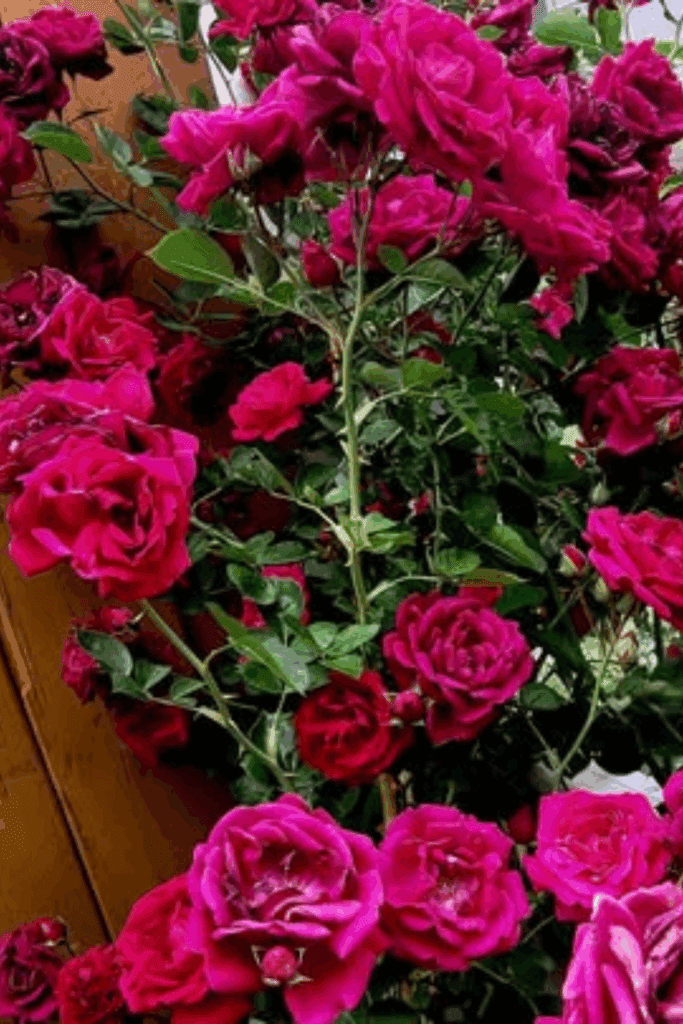
Average Lifespan of Roses
What Can I Expect with Basic Care for My Rose Bush?
When you provide basic care for your rose bush, you can expect it to thrive and produce beautiful blooms. Roses are relatively easy to maintain as long as they receive the right amount of sunlight, water, and nutrients.
Expect your rose bush to need at least 6 hours of direct sunlight each day for optimal growth. In terms of watering, keep the soil consistently moist but not waterlogged. Roses also appreciate regular feeding, so consider using a balanced fertilizer during their growing season.
As your rose bush grows, you’ll want to prune it annually to encourage strong, healthy stems and to remove any dead or damaged wood. With the right care, your rose bush should grow steadily, offering you beautiful flowers year after year.
My Secrets for Long-Lived Roses
What Are the Signs That My Rose Bush Is Aging?
As your rose bush matures, there are several signs to watch for that indicate it may be aging. One of the first things you’ll notice is a reduction in the number and size of blooms. The flowers might also become less vibrant in color, and the stems could start to look woody or brittle.
The leaves may begin to yellow prematurely, and the overall growth may slow down. Additionally, if your rose bush has been planted for several years without pruning or rejuvenation, it may start producing fewer new shoots, which are crucial for healthy growth and flowering.
These are all signs that your rose bush might benefit from some extra care or rejuvenation to encourage fresh growth.
How Can I Rejuvenate or Divide My Rose Bush for New Growth?
Rejuvenating or dividing an aging rose bush can help bring it back to life and promote new growth. To rejuvenate your rose, start by cutting back the older, woody stems to just above the ground during late winter or early spring, before new growth begins.
This encourages the plant to focus its energy on producing fresh, healthy shoots. You can also remove any dead or diseased branches to ensure the plant’s energy is directed toward thriving parts. If your rose bush has grown large and overcrowded, dividing it can help. Dig up the bush carefully, making sure to preserve the roots, and divide the root ball into smaller sections.
Replant these sections in well-prepared soil, and they’ll grow into strong, vibrant new plants. With proper care, your rejuvenated or divided rose bush will reward you with a fresh burst of growth and stunning flowers.
My Year-Round Rose Care Calendar
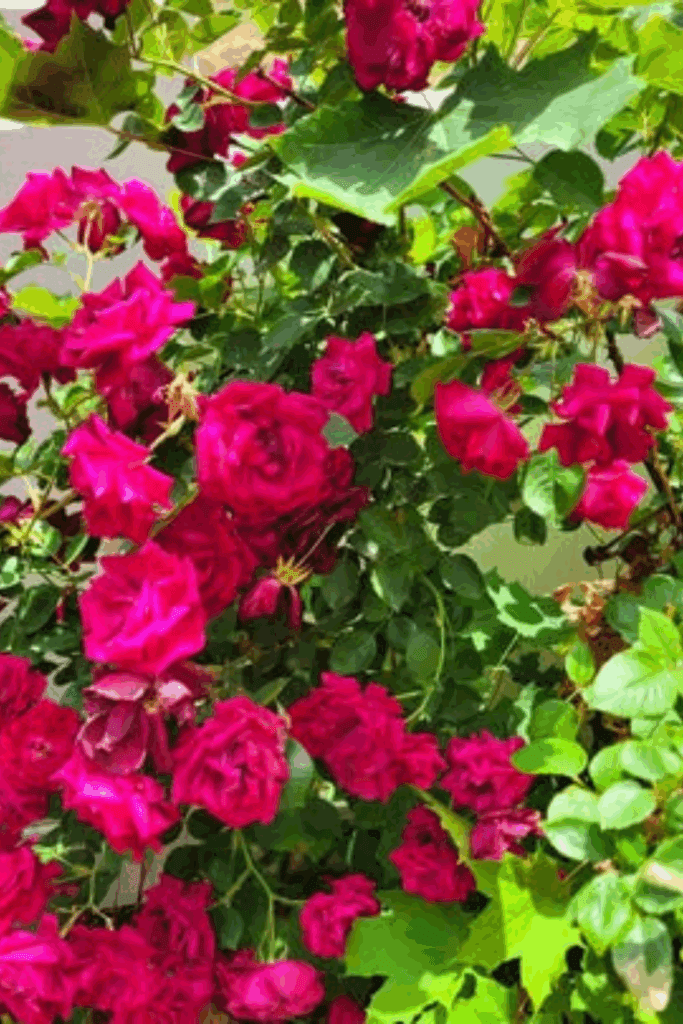
Spring and Summer Tasks
How Do I Properly Feed My Rose Bush for Healthy Growth?
Feeding your rose bush is crucial for encouraging vibrant blooms and strong growth. Roses are heavy feeders, so using a balanced fertilizer designed specifically for roses is essential.
Apply the fertilizer in early spring when new growth starts and again in mid-summer to support the blooming period. Be sure to follow the instructions on the fertilizer package, as overfeeding can harm the plant. Organic options, like compost or well-rotted manure, can also be beneficial as they provide slow-releasing nutrients that enrich the soil.
When you fertilize, make sure the soil is moist to prevent burning the roots, and always water after feeding to help the nutrients reach the roots.
How Often Should I Water My Rose Bush?
Watering is one of the most important aspects of rose care. Roses prefer deep watering rather than frequent light watering, as this encourages deeper root growth. Water your rose bush at the base, avoiding the leaves to prevent fungal diseases.
During the growing season, roses typically need about 1 inch of water per week, either from rainfall or supplemental watering. In hot, dry conditions, you may need to water more frequently. Always check the soil before watering—if the top inch feels dry, it’s time to water.
Mulching around the base of the plant helps retain moisture, keeps the soil cool, and reduces weeds, making your watering more efficient.
How Can I Encourage More Blooms on My Rose Bush?
To encourage more blooms on your rose bush, regular pruning and proper care are key. Deadheading, or removing spent flowers, is one of the best ways to stimulate new blooms. As soon as a flower fades, cut it back to the first set of healthy leaves to encourage the plant to focus energy on producing more flowers rather than seed production.
In addition to deadheading, make sure your rose bush gets enough sunlight—at least 6 hours a day—and is in well-draining soil.
If your rose bush has received proper feeding and watering, the energy it needs to produce those beautiful blooms will be maximized. Also, consider using a bloom-boosting fertilizer during the blooming season to encourage even more vibrant flowers.
Fall and Winter Prep
How Do I Prune My Rose Bush for Healthy Growth?
Pruning is essential to keeping your rose bush healthy and productive. The best time to prune your roses is in early spring, just before new growth starts. Begin by removing any dead, diseased, or damaged wood, cutting back to healthy tissue.
Next, shape the bush by trimming any crossing or inward-growing stems to improve airflow and reduce the risk of disease. Aim to leave the strongest, most productive canes and cut them back by about one-third to encourage new growth.
For repeat-blooming roses, it’s also important to remove spent flowers (deadheading) regularly throughout the growing season. Proper pruning will promote healthier plants and encourage more abundant blooms.
Why Is Mulching Important for My Rose Bush?
Mulching is one of the best ways to maintain healthy roses, as it helps retain moisture, suppresses weeds, and keeps the soil temperature stable. Apply a 2-3 inch layer of organic mulch, such as wood chips, bark, or compost, around the base of your rose bush.
Be sure to keep the mulch a few inches away from the stem to prevent rot. Mulching also enriches the soil as it breaks down, adding valuable nutrients.
Additionally, during the hot summer months, mulch helps keep the roots cool and reduces the frequency of watering, making it an essential part of your rose care routine.
How Do I Protect My Roses from Frost or Snow?
Protecting your roses from frost or snow is crucial, especially in regions with harsh winters. Start by applying a thick layer of mulch around the base of the plant in late fall, which will help insulate the roots from freezing temperatures.
For additional protection, consider wrapping the bush with burlap or using rose cones to shield the canes from the cold. If your roses are climbing varieties, gently tie the canes to a trellis and cover them with a protective blanket or frost cloth.
After the first hard frost, stop watering the roses to prevent excess moisture around the roots. Taking these steps will help ensure your rose bush survives winter and emerges healthy in the spring.
More Cottage Garden Wisdom Inside My Book

If you’ve enjoyed these rose-growing tips, you’ll love my book Cottage Garden Secrets. It’s packed with hands-on advice, personal stories, and time-tested techniques for creating a thriving, old-fashioned garden full of charm and color.
From growing heirloom flowers to seasonal tasks written in a romantic narration, I share everything I’ve learned from years of gardening barefoot in my backyard.
Whether you’re just getting started or looking to deepen your connection with the soil, this book is for you.
👉 Find it on Etsy
👉 Or grab a copy on Amazon
Conclusion: Why Roses Are Always Worth It
Why Do Roses Belong in Every Cottage Garden?
Roses are a timeless addition to any cottage garden, bringing both beauty and charm. Their classic elegance complements the rustic, whimsical feel that defines cottage-style landscaping. Roses offer a wide variety of colors, sizes, and fragrances, making them incredibly versatile for creating stunning garden arrangements.
Whether climbing over a trellis, spilling out of a container, or framing a garden path, roses add a romantic touch that blends effortlessly with other traditional cottage garden plants like lavender, daisies, and peonies.
Plus, they are relatively easy to care for once established, making them a must-have for gardeners who want to add beauty without too much complexity.
What’s the Joy of Watching Roses Bloom Year After Year?
There’s something truly magical about watching roses bloom year after year, making them a rewarding plant to grow. The anticipation of their first buds in the spring and the joy of seeing them unfurl into full, fragrant blooms brings a sense of accomplishment. As roses mature, they often become even more prolific, filling your garden with vibrant colors and scents.
Knowing that each year your roses are going to bloom again creates a deep sense of connection with nature and the garden you’ve nurtured. Whether it’s a cherished heirloom variety or a newly planted bush, the resilience of roses, blooming season after season, makes them a symbol of growth and renewal in your garden.
What’s the Best Encouragement for Beginners to Try Growing Roses?
If you’re a beginner, don’t be intimidated by growing roses! Starting with the basics, such as selecting the right variety for your climate, preparing your soil, and understanding their light and water needs, is all it takes to begin your rose-growing journey.
Roses may seem challenging at first, but they are surprisingly forgiving once you understand their needs. Remember, every gardener starts somewhere, and roses are a fantastic plant to grow because they reward you with stunning beauty and a sense of pride.
Start small, plant a few varieties, and enjoy watching your roses bloom. With a little patience and care, you’ll soon be enjoying the many joys roses bring to your garden and your soul.
Resources: Here are some helpful resources for further information.
- Growing Roses – By Oregonmetro.gov
- How to Grow Roses – By RHS
- The Joy of Growing Roses: The Basics for Beginners – By David Austin Roses
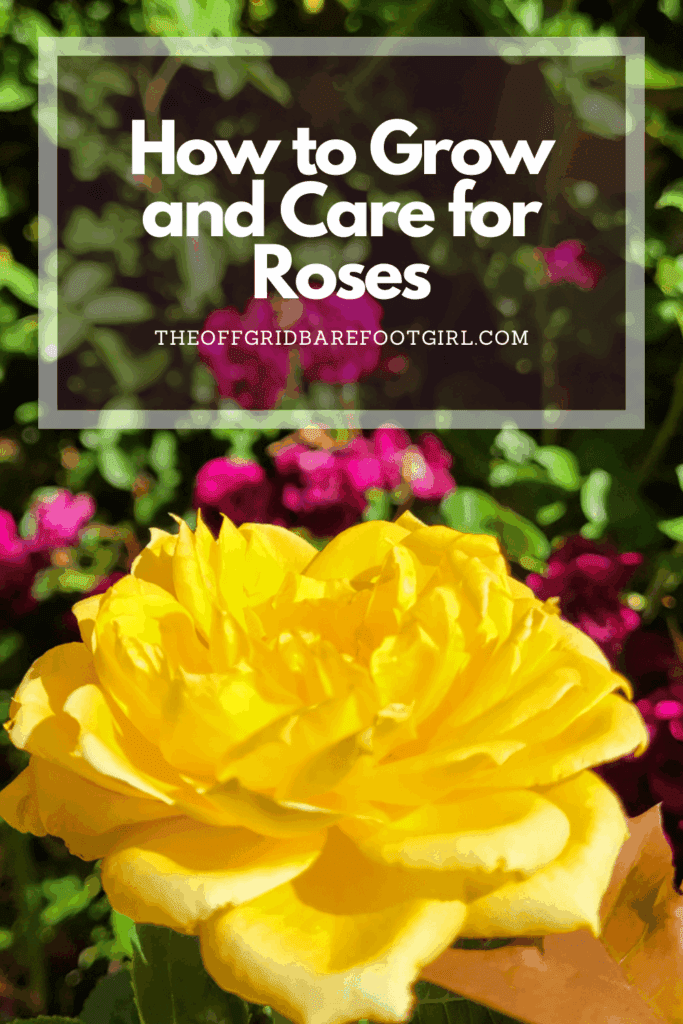
Frequently Asked Questions
1. When is the best time to plant roses?
The best time to plant roses is in early spring after the last frost or in fall, at least six weeks before your first expected frost. This gives the roots time to establish before extreme weather hits.
2. How often should I water my rose bushes?
Roses typically need deep watering once or twice a week, depending on your climate and soil. I water mine early in the morning to keep the roots moist and reduce disease risk.
3. Can I grow roses from cuttings?
Yes, you can! I’ve had great success propagating roses from softwood cuttings in late spring or early summer. Just snip a healthy stem, dip it in rooting hormone, and plant it in moist soil or water.
4. What can I do with harvested rose petals?
Rose petals are incredibly versatile. I dry them for potpourri, steep them in oils for homemade salves, or use them fresh to make rosewater and tea. Just be sure they’re untreated and pesticide-free!
Summary
I hope I have inspired you to grow your own rose bushes.
If you were encouraged by this post, I invite you to check out my FREE Self-Sufficiency Academy for fun free printables, planners, and charts.
ENTER MY FREE SELF-SUFFICIENCY ACADEMY HERE
I invite you to check out some more of my posts!
How to Grow and Care for Hollyhocks
Blessings,
The Off Grid Barefoot Girl



